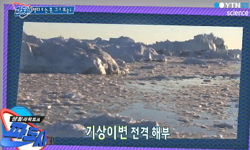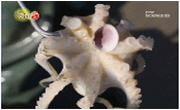This paper is about Thai film「Uncle Boonmee : who can recall his past lives」 which won the Grand Prize at the Cannes Film Festival in 2010, but it was criticized as a difficult film. In this film, I researched the characteristics of Thai Religious...
http://chineseinput.net/에서 pinyin(병음)방식으로 중국어를 변환할 수 있습니다.
변환된 중국어를 복사하여 사용하시면 됩니다.
- 中文 을 입력하시려면 zhongwen을 입력하시고 space를누르시면됩니다.
- 北京 을 입력하시려면 beijing을 입력하시고 space를 누르시면 됩니다.

태국 불교에 내재된 종교 의식(意識): 영화 「엉클 분미」를 중심으로 = Religious Rituals Embedded in Thai Buddhism: Focused on the Film, 「Uncle Boonmee: who can recall his past lives」
한글로보기부가정보
다국어 초록 (Multilingual Abstract)
This paper is about Thai film「Uncle Boonmee : who can recall his past lives」 which won the Grand Prize at the Cannes Film Festival in 2010, but it was criticized as a difficult film. In this film, I researched the characteristics of Thai Religious Rituals which embedded in Thai Buddhism. In Thailand around 94% of whole population believes Theravada Buddhism. The characteristics of Thai Buddhism is that the mixture of a variety of Religions: Indigenous-animist, Brahmanic, Buddist, and Brahmanism and they co-exist naturally in Thai society. They are gradually historically developed over the long period to Thai religious system. I analyzed the ambiguous and difficult scenes of the film by using Jacques Lacan`s theory as needed. He called the world composed of images, the imaginary, and called the world dominated by language and social norms, the symbolic. And the world connected between these two worlds was called the real. This film also connected with the three stages of Jacques Lacan in that fantasy and reality are connected in every part of his scenes. According to this analysis, I examined Buddhism, Brahmanism, and animism, which have been unified by the Thai government as the Thai Buddhism, but still embedded in the religious rituals of Thai. I also analyzed the characteristics of Thai religious system and how they reflected in the Thai society through the unique characters in the film. For example, uncle Boonmee`s past lives and karma, his son Bunssong who turned into a monkey phi(spirit), his wife Huai who died and appeared as a khwan(ghost), and an ugly princess who can have a new life by the power of water. Specifically, uncle Boonmee, the main character of the film, shows believes of reincarnation, karma, and past, present, future lives. His son Boonssong who left home and turned into a monkey spirit shows the worship of animistic spirits. And the ugly princess who turned into a fish spirit with the help of Catfish in the water and lives the new life shows the Thai worship of water. In addition, through Boonmee`s dead wife, Huai, who appears as a ghost, we can see the mixture of Thai Buddhism composed of the reincarnation of Buddhism, animism, and `khwan` spirit of Brahmanism. In conclusion, the film「Uncle Boonmee: who can recall his past lives」implicitly reflected the coexistence of various religions in Thai Buddhism, and because of this factors, this movie was criticized as a difficult film by reviewers.
참고문헌 (Reference)
1 서원태, "현대영화에 나타난 스토리텔링의 구조적 경향에 관한 연구 -구조영화와 아피찻퐁 위라세타쿤의 영화양식 비교를 중심으로-" 한국디지털정책학회 12 (12): 325-333, 2014
2 김선아, "포스트필름 시네마의 기억술" 한국미학예술학회 36 : 143-172, 2012
3 김홍구, "태국학 입문" 부산외국어대학교 출판부 1999
4 김영애, "태국인의 종교와 종교의식" 10 : 93-132, 1999
5 이병도, "태국의‘짜오퍼’(Chao Pho)에 관한 연구" 11 (11): 1-17, 2002
6 정환승, "태국의 이해" 한국외국어대학교 출판부 65-78, 2005
7 조흥국, "태국의 공덕지향적 불교신앙과 민간신앙" 국립민속박물관 (19) : 123-143, 2006
8 정환승, "태국의 3 개월 승려 수업에 관한 연구" 14 : 121-147, 2000
9 조흥국, "태국-불교와 국왕의 나라" 소나무 2016
10 김홍구, "태국 불교의 이해" 부산외국어대학교 출판부 2005
1 서원태, "현대영화에 나타난 스토리텔링의 구조적 경향에 관한 연구 -구조영화와 아피찻퐁 위라세타쿤의 영화양식 비교를 중심으로-" 한국디지털정책학회 12 (12): 325-333, 2014
2 김선아, "포스트필름 시네마의 기억술" 한국미학예술학회 36 : 143-172, 2012
3 김홍구, "태국학 입문" 부산외국어대학교 출판부 1999
4 김영애, "태국인의 종교와 종교의식" 10 : 93-132, 1999
5 이병도, "태국의‘짜오퍼’(Chao Pho)에 관한 연구" 11 (11): 1-17, 2002
6 정환승, "태국의 이해" 한국외국어대학교 출판부 65-78, 2005
7 조흥국, "태국의 공덕지향적 불교신앙과 민간신앙" 국립민속박물관 (19) : 123-143, 2006
8 정환승, "태국의 3 개월 승려 수업에 관한 연구" 14 : 121-147, 2000
9 조흥국, "태국-불교와 국왕의 나라" 소나무 2016
10 김홍구, "태국 불교의 이해" 부산외국어대학교 출판부 2005
11 정환승, "태국 문화 속에서 물의 의미에 관한 고찰" 한국태국학회 20 (20): 21-54, 2014
12 출입국 외국인정책본부, "출입국 통계연보"
13 클레어 콜브룩, "질 들뢰즈" 태학사 2004
14 자크 라캉, "욕망 이론" 문예출판사 2003
15 이나라, "영화적 이미지와 불교적 사유" 5 : 69-96, 2015
16 자크 라캉, "에크리" 살림 2007
17 이경희, "아핏차풍(Apichatpong Weerasethakul)의 인식론 너머의 영상언어" 한국기초조형학회 12 (12): 359-370, 2011
18 이지영, "아피찻퐁 위라세타쿤의 <프리미티브 프로젝트>의 구조: ‘억압된 기억의 환기’로서의 ‘경계 허물기’ 전략" 영상예술학회 (19) : 347-377, 2011
19 손현석, "아피찻퐁 위라세타쿤 영화의 사운드 내러티브 분석: <엉클 분미>를 중심으로" 영상예술학회 (19) : 69-104, 2011
20 서대정, "아피찻퐁 영화에 나타난 로컬리티와 영화의 책무의식 관한 연구" 영상미디어센터 (19) : 9-41, 2014
21 박지은, "신화의 현대적 의미 고찰 : 아피찻퐁 위라세타군의 영화를 중심으로" 전남대학교 문화전문대학원 2013
22 최화선, "신화, 유령, 잔존하는 이미지: 아피찻퐁 위라세타쿤의 영화를 중심으로" 종교문화비평학회 27 (27): 155-187, 2015
23 줄리아 크리스테바, "시적 언어의 혁명" 동문선 2000
24 김영애, "소설 『라이 치윗』에 나타난 태국인의 삶과 불교 : ‘업(業)’을 중심으로" 외국문학연구소 (28) : 31-54, 2007
25 이병도, "세계의 민간신앙" 한국외국어대학교 출판부 119-158, 2006
26 이은구, "세계의 민간신앙" 한국외국어대학교 출판부 6-24, 2006
27 이진경, "노마디즘 2" 휴머니스트 2009
28 김진영, "근대 동남아불교의 힌두문화 수용 - 태국 라마끼엔의 힌두신화와 불교적 변용" 한국동남아학회 21 (21): 43-75, 2011
29 Youtube, "감독 아피찻퐁 위라세타꾼 인터뷰"
30 "สารานุกรมไทย" ราชบัณฑิตยสถาน 1983
31 ศิราพร ฐิตะฐาน., "ความเชื่อและศาสนาในสังคมไทย(태국 사회의믿음과 종교)" มหาวิทยาลัยสุโขทัยธรรมาธิราช 2012
32 Geertz, Clifford., "The interpretation of cultures" Fontana Press 87-125, 1993
33 Keyes, Charles F., "The golden peninsula: Culture and adaptation in mainland southeast asia" University of Hawaii Press 1995
34 Wyatt, David K., "Thailand: A short history" Yale University press 1984
35 Rajadhon, Anuman., "Some traditions of the Thai: And other translations of Phya Anuman Rajadhon's articles on Thai customs" Thai Inter-Religious Commission for Development & Sathirakosis Nagapradica Foundation 1987
36 Kirsch, Tomas., "Complexity in the Thai religious system : An interpretation" 36 (36): 241-266, 1977
37 Tambiah, S. J. ., "Buddhism and the spirit cults in north-east Thailand" Cambridge University Press 1972
38 Kaufman, Howard., "Bankhaud: A community study in thailand" J.J. Ausgustine Incorporated Publisher 1960
동일학술지(권/호) 다른 논문
-
베트남 당쫑의 정치(政治)와 과시(科試) 일고찰(一考察)
- 한국외국어대학교 동남아연구소
- 송정남 ( Song Jung Nam )
- 2017
- KCI등재
-
영국 식민지배 시기 말레이시아 법제도의 변동: 말레이 반도를 중심으로
- 한국외국어대학교 동남아연구소
- 소병국 ( Soh Byung Kuk )
- 2017
- KCI등재
-
아세안 근로자의 조직몰입에 대한 종교문화권간 차이의 탐색
- 한국외국어대학교 동남아연구소
- 권석균 ( Kwun Seog Kyeun )
- 2017
- KCI등재
-
아세안경제공동체(ASEAN Economic Community)와 개발격차 해소: GMS를 중심으로
- 한국외국어대학교 동남아연구소
- 이요한 ( Lee Yo Han )
- 2017
- KCI등재
분석정보
인용정보 인용지수 설명보기
학술지 이력
| 연월일 | 이력구분 | 이력상세 | 등재구분 |
|---|---|---|---|
| 2026 | 평가예정 | 재인증평가 신청대상 (재인증) | |
| 2020-01-01 | 평가 | 등재학술지 유지 (재인증) |  |
| 2017-01-01 | 평가 | 등재학술지 유지 (계속평가) |  |
| 2013-01-01 | 평가 | 등재 1차 FAIL (등재유지) |  |
| 2010-01-01 | 평가 | 등재학술지 선정 (등재후보2차) |  |
| 2009-01-01 | 평가 | 등재후보 1차 PASS (등재후보1차) |  |
| 2008-01-01 | 평가 | 등재후보 1차 FAIL (등재후보1차) |  |
| 2007-01-01 | 평가 | 등재후보학술지 유지 (등재후보1차) |  |
| 2005-01-01 | 평가 | 등재후보학술지 선정 (신규평가) |  |
학술지 인용정보
| 기준연도 | WOS-KCI 통합IF(2년) | KCIF(2년) | KCIF(3년) |
|---|---|---|---|
| 2016 | 0.29 | 0.29 | 0.24 |
| KCIF(4년) | KCIF(5년) | 중심성지수(3년) | 즉시성지수 |
| 0.2 | 0.18 | 0.308 | 0.12 |





 KCI
KCI KISS
KISS






